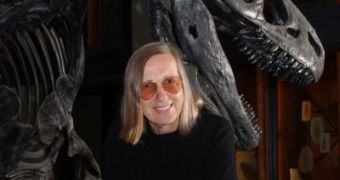Growing evidence that has been accumulated over the past few years seems to sink the asteroid explanation for the disappearance of the dinosaurs more and more underground. Indeed, according to the latest data, it would appear that either a multitude of factors, including a meteorite impact, or a single event – other than such an event – was the main culprit behind the Cretaceous-Tertiary extinction event, which took place about 65 million years ago. One of the researchers who drew a lot of attention to herself with her arguments against the asteroid theory was Princeton University Geoscientist Gerta Keller, who has been studying rocks in the US, Mexico and India for a good many years.
In a new scientific study, published in the April 27th issue of the Journal of the Geological Society of London, Keller brings new arguments to support her hypothesis, and to hammer another nail in the coffin of the asteroid theory. In new investigations on-site, the expert managed to find “biotic evidence” of the fact that the K-T boundary didn't cause all the species extinctions attributed to the event in one go, but that the depopulation of the Earth took place over millions of years.
This find is in tune with another new one, which shows that the dinosaurs actually survived for an additional 500,000 years in certain parts of what is now the US, after the so-called extinction event. In addition, Keller also revealed the fact that she and her team discovered a number of fossils hinting at underwater burrows created after the K-T boundary, which means that the hypothesis set forth by some experts, who believe that a massive tsunami followed the hypothetical asteroid impact, is false.
“Careful documentation of results that are reproducible and verifiable will uncover what really happened. This study takes an important step in that direction,” the expert said. “Not a single species went extinct as a result of the Chicxulub impact. The decades-old controversy over the cause of the K-T mass extinction will never achieve consensus. What is necessary is careful documentation of results that are reproducible and verifiable.”
“Keller and colleagues continue to amass detailed stratigraphic information supporting new thinking about the Chicxulub impact and the mass extinction at the end of the Cretaceous. The two may not be linked after all,” the Program Director of the National Science Foundation's (NSF) Division of Earth Sciences, Richard Lane, added. The NSF was the institution that provided the funds for the new research.

 14 DAY TRIAL //
14 DAY TRIAL //